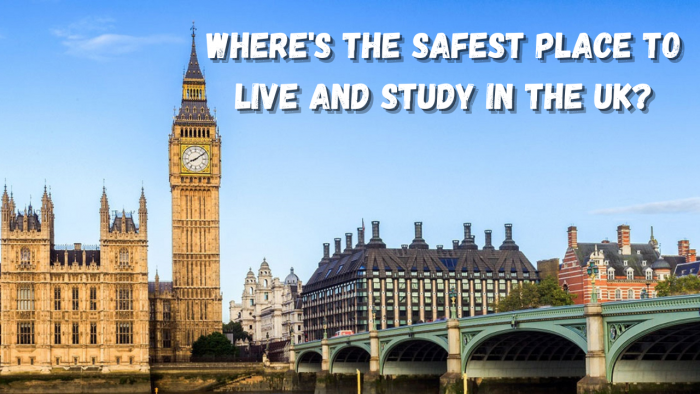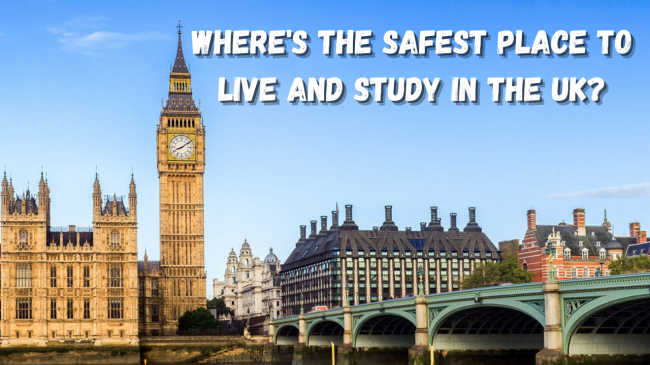
The UK is one of the safest countries but crime varies locally. Gloucestershire has the lowest crime rate making Cheltenham safe for students. Oxford and Cambridge, known for world-class universities and large student populations, have very low crime rates. Some outer London boroughs like Kingston have lower crime than central areas. Other university towns like York, Durham, and St. Andrews also tend to be safe due to large student populations and university resources. Students should research the specific town or city they plan to study to determine accurate safety information.
Safety in the UK
The UK has a relatively low crime rate and is considered one of the safest countries in the world. However, there are variations in safety between regions and local areas. Prospective students should consider these factors when choosing where to live and study.
Overall Crime Rate
The UK has a low overall crime rate compared to many other developed nations. The number of offenses per 1,000 population is lower than in the US, Canada, Australia, and much of Europe.
The UK ranks 5th out of 163 countries in the Global Peace Index, which measures safety and security based on factors like homicide rates, violent crime, terrorism, and political instability.
Regional Differences
While the UK as a whole is safe, there are notable differences in crime rates between regions. Rural and small-town areas tend to have the lowest crime levels, while large cities generally have higher rates of crime.
Some of the safest regions in the UK include:
• Gloucestershire - Crime rates are around half the national average
• Oxfordshire - Low levels of burglary, theft and violent crime
• Wales - Relatively low crime rates, especially in rural parts
• Highlands and Islands of Scotland - Very low population densities result in little crime
Meanwhile, large UK cities like London, Birmingham, and Manchester experience higher levels of crime due to higher population densities and social issues.
Type of Crime
The UK has a relatively low rate of violent crime compared to many other developed nations. However, property crime remains an issue. Types of crimes commonly reported in the UK include:
• Theft - By deception, from motor vehicles, bicycles, and personal property
• Criminal damage and arson
• Drug offenses
• Handling stolen goods
• Burglary
• Vehicle crime - theft, unlawful taking away, and interfering with vehicles
Safest UK Places to Live and Study
Areas with a combination of factors tend to have the lowest crime rates, making them the safest places to live and study in the UK.
Gloucestershire
Gloucestershire has the lowest rates of crime in the UK. The county is mostly rural with low population densities and strong community ties. Residents in towns like Cheltenham report a high quality of life. The University of Gloucestershire is located in Cheltenham, providing options for students.
Oxford and Cambridge
These historic university towns boast some of the lowest crime levels in the UK. Large student populations, ample security resources from universities, and a higher socioeconomic status contribute to safety. Both cities have world-class universities attracting international students.
Outer London Boroughs
Some outer London boroughs experience lower crime rates compared to central boroughs, though local variations exist. Areas like Kingston upon Thames, Ealing, and Sutton benefit from good access to public transport and amenities while maintaining somewhat lower population densities.
Scottish Highlands and Islands
Rural areas of northern Scotland have extremely low crime rates due to sparse populations, low-income inequality, and strong community ties. However, there are limited options for higher education in these regions.
University Towns
Besides Oxford and Cambridge, many other university towns like York, Durham, St. Andrews, and Exeter typically have lower crime rates. Large student populations and university resources contribute to safety.
Factors Impacting Safety
Several factors determine how safe an area is within the UK
Population Density
Lower population density is generally linked to less crime due to more space, less anonymity, and stronger social networks. Rural areas and small towns tend to be the safest.
Socioeconomic Status
Wealthier areas of the UK experience less crime. Income inequality is also a risk factor for some types of crime.
Community Cohesion
Areas with more social capital and community engagement tend to have lower crime rates as there are stronger cultural norms of prosocial behavior.
Public Services
Regions with effective policing, security systems, and public services deter criminal activity and quickly respond to issues.
Student Populations
Large student populations are linked to lower crime rates, likely due to higher socioeconomic status, more community engagement, and university resources.
Culture of Lawfulness
Where there is a stronger cultural norm of following laws and rules, crime rates tend to be lower. The "returns of crime" also diminish in wealthier areas.
Staying Safe in the UK
While the UK remains one of the safest countries in the world, there are precautions students can take to optimize safety:
Be Aware of Surroundings
Be attentive when walking alone, especially at night. Avoid distractions like phones that reduce awareness.
Avoid Isolated Areas
Walk on well-lit, populated streets. Avoid parks, alleyways, and underpasses when alone at night.
Secure Accommodation
Lock windows and doors when leaving or sleeping. Install locks, alarms, and cameras if possible. Install security cameras covering all entry points if possible. Amazon and eBay offer affordable security cameras that can be monitored from phones.
Protect Valuables
Don't leave valuable items visible in vehicles. Keep wallets, passports, and gadgets secure. Photograph or make a written inventory of valuable items including descriptions, serial numbers, and model numbers. This helps prove ownership if items are lost or stolen.
Seek Support
Inform family, friends, or university staff of plans and routes traveled. Carry a mobile phone to call for help if needed.
In summary, safety within the UK varies at the local level. Therefore, prospective students should research crime rates and risk factors within specific towns, cities, and boroughs they are considering. While almost all parts of the UK are relatively safe, places with lower population densities, higher incomes, strong communities, and larger student populations tend to experience the lowest crime rates. With awareness and practical precautions, international students can safely enjoy living and studying anywhere in the UK.
Also, Read: Benefits of Traveling to the Safest Countries in the World











